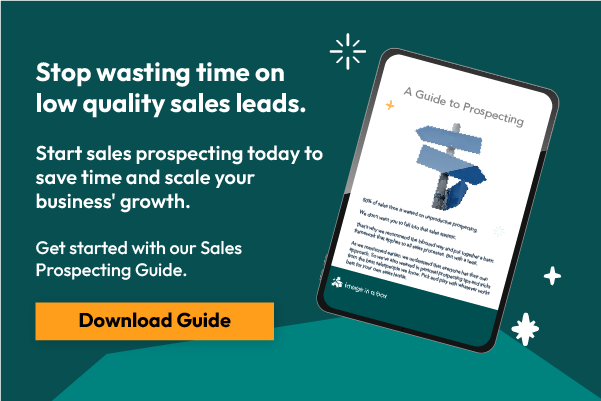Your nonprofit’s website is one the most valuable resource in your marketing strategy.
75% of donors turn to online resources to look for information before donating. And 47% of donors visit multiple nonprofit websites before donating.
So once you have a beautiful, information-rich website, you need more to attract more donors to it.
But how do you go about that?
In this blog post, we'll share eight tips that will help you attract more donors to your website to increase your online donations. Let's get started!
Attracting the “Right” Traffic to Your Website
While seeing your website traffic increase may look good on paper, what good is it if those website visitors didn’t engage with your organization? If you keep your donor persona in mind when you create content, ads, and keywords, you will be more likely to attract potential donors to your site.
8 Ways to Increase Your Website Traffic
We’ve compiled a list of tips for increasing the traffic to your website. By incorporating these tips and creating donor-centric content, you will be on your way to having the right people on your website.
1. Establish a Goal For Website Traffic
You will base your content and keywords on your goal so it is important that you have one set. In this case, your goal is to gain more online donations from your website visitors. Other goals can include more blog post views or volunteer sign-ups. No matter what your goal is for your website traffic, don’t lose sight of it. Always make sure that any content you push will relate back to that goal.
Learn how to generate more online donations for your nonprofit.

2. Use Google Analytics
You have to track the progress of your goal on an analytics tool. Google Analytics will inform you of how many of your website visitors took action on your website so that you can make sure your marketing efforts are working. It will also show you the source that brought them to your website, how long they stayed on your page, and the other pages they viewed. It’s truly a powerful marketing tool. Best of all, it’s free to use in most cases!
3. Provide a Great User Experience
When your website is easy to navigate, your visitor can find the information they are looking for quicker. In a study conducted by Adobe, they found that 38% of users stopped engaging with a website if they found that the content is unattractive in its layout or imagery. Therefore, an attractive website establishes credibility and can encourage your user to engage with your organization. Check out our post on the do’s and don’ts of nonprofit web design to ensure you’re providing the best user experience on your website.
4. Improve Your Search Engine Optimization
Online resources play a huge part in your donor’s research, so you can’t afford to ignore your website’s search engine optimization (SEO). You have to create donor-centric keywords and content so that you attract users who are wanting to contribute to your cause. Put yourself in your donor’s shoes and use keywords that match their intent. When you use relevant keywords and create coordinating content, you will appear higher in your donor persona’s search results. To learn more about how to get your nonprofit’s website to appear in search results, read our post on increasing your SEO.
5. Create Compelling, Relevant Content
Your content should be relevant to your donor persona and motivate them to engage with your organization. Storytelling is key for nonprofits because you want the reader to empathize with your cause. Plus, donors want to know how you are using their funds. Appealing to your visitors’ emotions through impactful stories and being transparent with how you use your funds can increase your chances of generating more online donations.
Learn how to generate more online donations for your nonprofit.

Promoting your content on your social media accounts will encourage your followers to check out your website. Give them a good reason to click over to your website, whether it be to learn more information about something or to make a donation.
You should also ensure that your website link is in the bio/about section on all of your social media accounts. This is a free, effective way to get users to click over to your website.
Pro Tip: On Instagram, use a tool that creates a webpage that can have multiple links, like Linktree, so that you can have multiple destinations for your users to go to all in one link. For example, you can promote your latest events, blog posts, website, and donation pages all on one page that provides separate links to those other pages.
7. Include website link in all emails and printed materials
Another easy way to draw attention to your website is to plug the link into your email signatures or on your event flyers. However, you still need to ensure that your audience has a reason to visit your website, such as more information or to make a donation.
Which one would you be more likely to click over to in an email?
A: www.imageinabox.com
B: For more digital marketing tips, visit our blog: blog.imageinabox.com
You would probably choose B since it provides you with more information and it leads you directly to what you are looking for.
Learn how to generate more online donations for your nonprofit.

8. Create online advertisements
There are multiple ways to go about creating online advertisements to promote your website. Factors such as what online platforms your target audience uses and your budget will help narrow down your choices.
Most donors use search engines to research nonprofits prior to giving, so investing in search ads is a smart move. If your nonprofit qualifies for free advertising dollars from Google to create search ads, you should use that to your advantage.
If your donor persona is very active on social media, then narrow down which specific platforms they use and look into creating social media ads. If you need help deciding which type of online ads to invest in, read our post that compares social ads to search ads. It can help you make the best choice for your organization.


